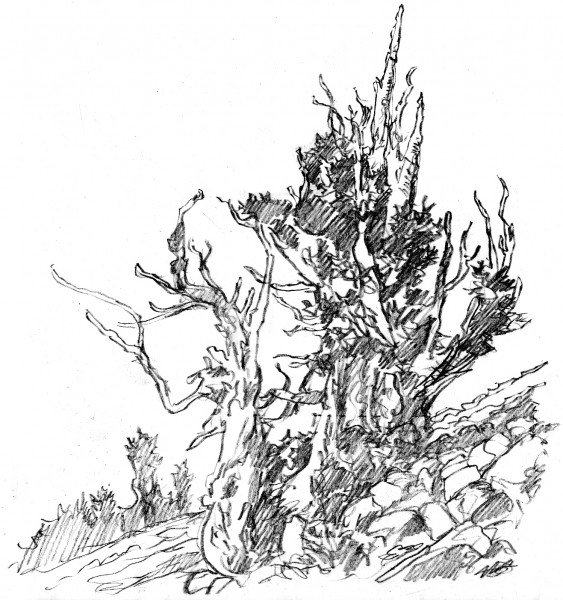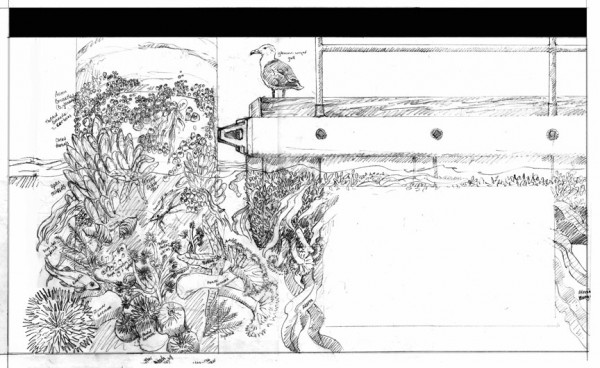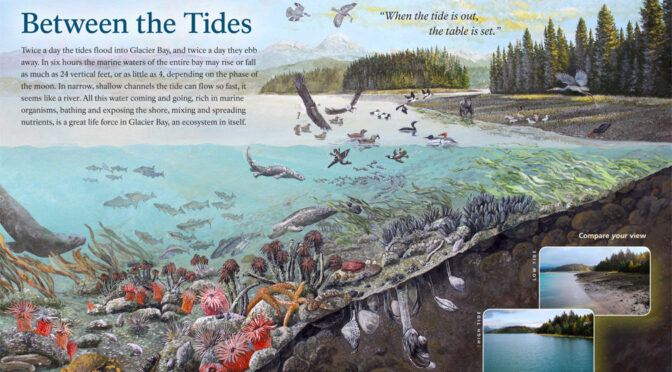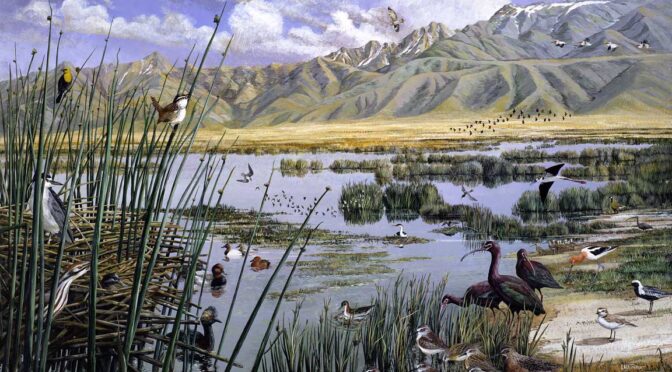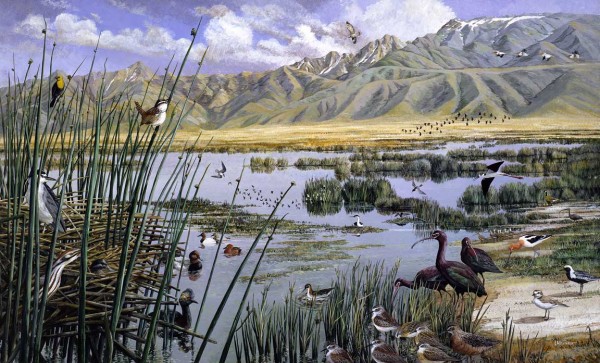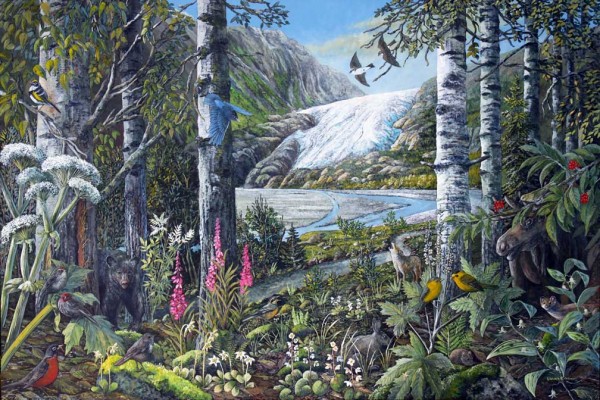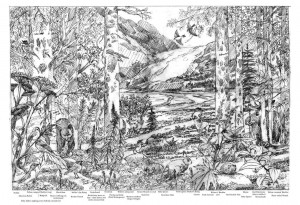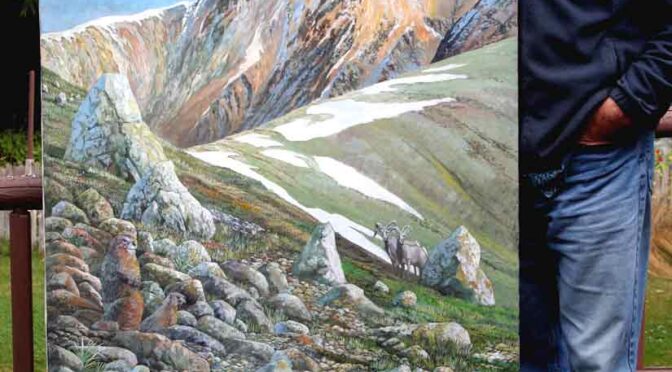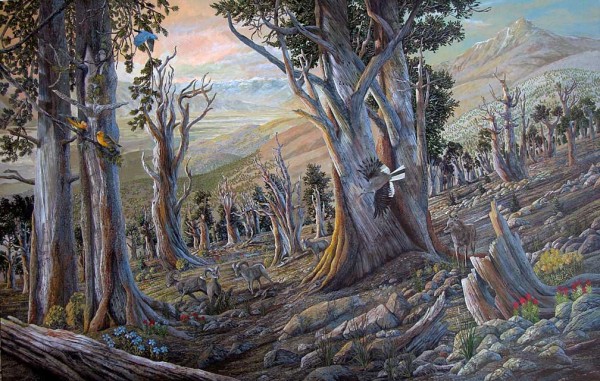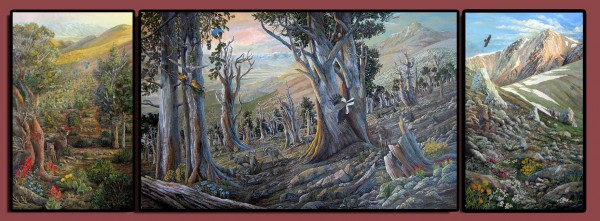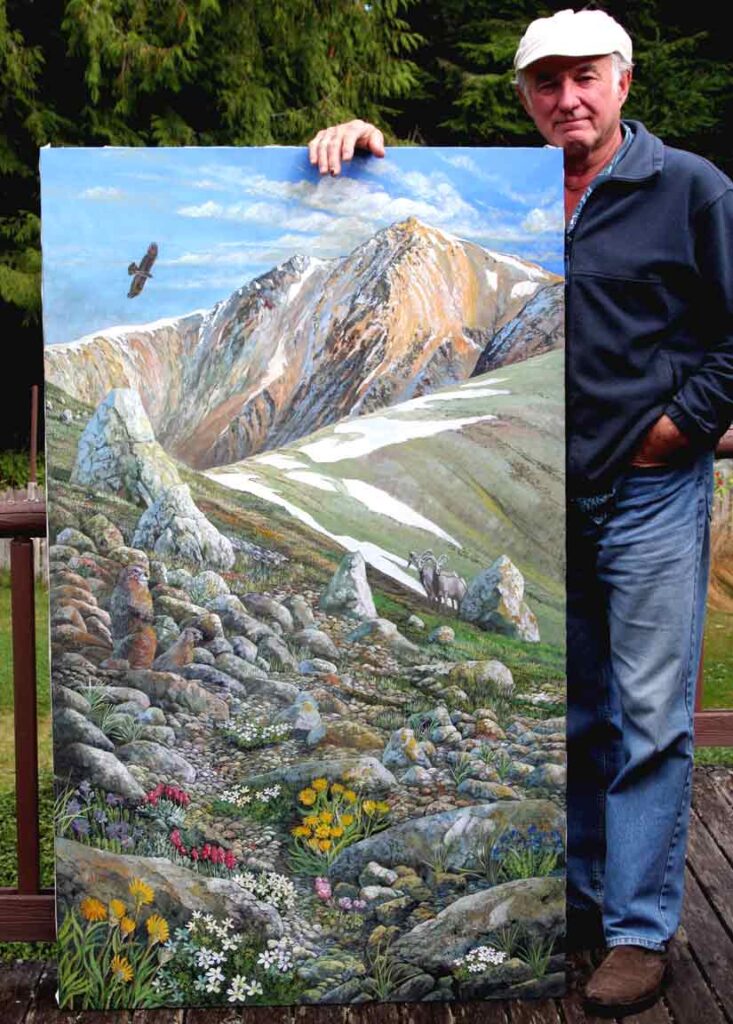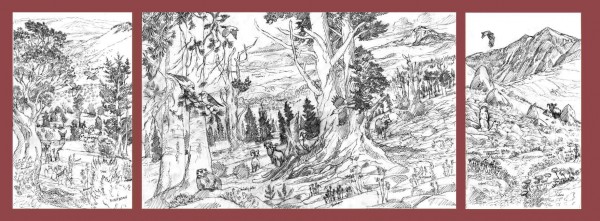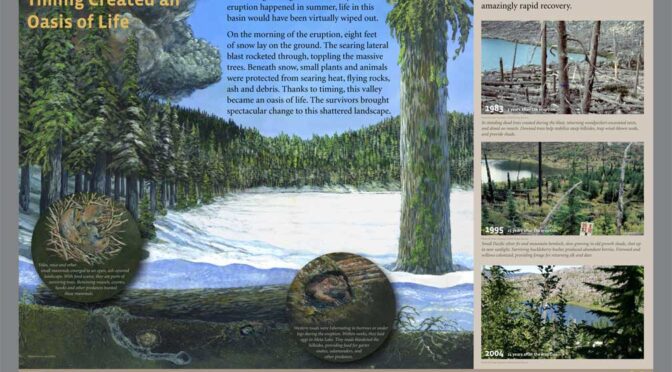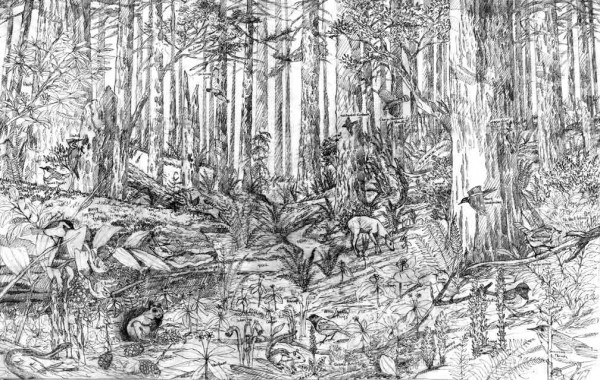A few weeks ago I posted my three large murals just completed for the new Schulman Grove Visitor Center near Bishop, CA. Now I’m working on some smaller art for interpretive panels for the rest of the building, and this one features a big ol’ gnarly ancient bristlecone tree in pen and ink and acrylic wash. Below is the preliminary sketch so you can see the progression from pencil to finished painting. It’s pretty close!
There are a lot of other people involved in this project besides me, but I seem to rarely express thanks to these folks for the help I get and joy I experience in doing my work. I’m sure not saying I’m any better than anyone else here, just that it takes a bunch of people to make a visitor center. There’s Rosie, the contractor and designer from Georgia, Frank the writer from Marin County, CA, John L and Sheryl H from the Forest Service, as well as Scott and John from the team Rosie’s assembled to get all this accomplished. We’re a bunch of people that are all doing specific jobs to create a beautiful installation on a remote mountaintop in the Great Basin – and I get to do the art. What a deal!
Thanks for reading this week.
Larry Eifert
Click here to go to the online blog this was to.
Click here to go to our main website – packed with jigsaw puzzles, prints, interpretive portfolios and lots of other stuff.
Click here to check out what Nancy’s currently working on with her photography.

